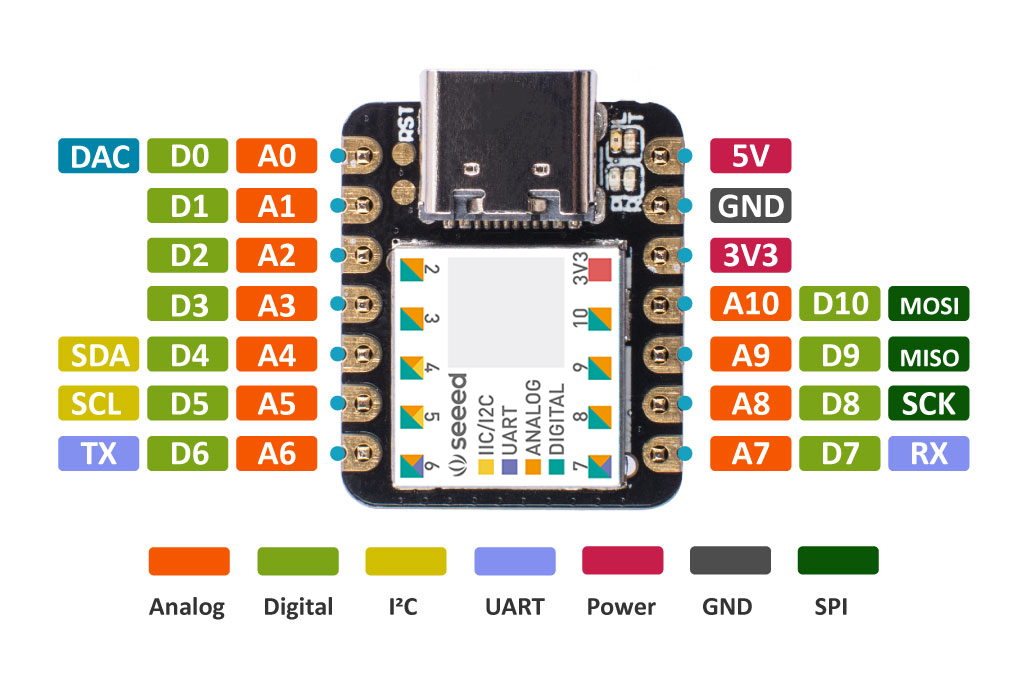I've been literally debugging the new examples for the irq pin (as of an hour ago). I'm jealous of the Seeduino Xiao; I've been thinking of getting the adafruit clone that has 2MB extra storage... I digress.
You shouldn't need to use a pull-up resistor on the IRQ pin because it is always HIGH until triggered. From my latest debugging experience, you should use the FALLING mode parameter to attachInterrupt() as using LOW seems to cause more than 1 ISR call per event.
Notice the new example uses digitalPinToInterrupt(2) as arduino docs state that pin 2 is supported on most boards for IRQ events. I think samd supports any digital input pin for IRQ events.
Also samd boards' usb serial communication are best used when you
while (!Serial) {}after calling Serial.begin() because they start up so fast and boast native USB support.
 Sadly not. I personally don't mind if the Xiao isn't supported - it was a quick board for a cheap price available on free next day delivery. But there are probably many boards where the lack of
Sadly not. I personally don't mind if the Xiao isn't supported - it was a quick board for a cheap price available on free next day delivery. But there are probably many boards where the lack of
https://github.com/nRF24/RF24/blob/a0cd707137607842f0ef782f12f2e40409a12d38/examples/pingpair_irq_simple/pingpair_irq_simple.ino#L54
I fell foul of this on a samd21-based Seeeduino Xiao today. Without setting the
pinMode(INPUT_PULLUP)the sketch enters an ISR loop which prevents USB serial communication and, no doubt, many other features if you attempted to add them.It might also be worth using the Arduino-recommended
digitalPinToInterrupt(0)inattachInterrupt()too. I don't have a fork, just the Arduino library manager version which I have mangled, so this is a request for another contributor to wrap this into their next PR.